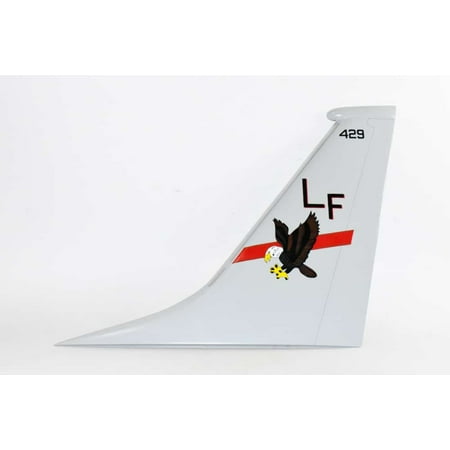VP-16 War Eagles P-8 Poseidon Tailflash Display proudly in the goat lock this 20 inch VP-16 War Eagle wooden plaque (carved and painted). Length- 20 inches Made from Mahogany US Veteran Owned Business The use of naval aviation insignia is a modern form of heraldry that dates back to the early period of naval aviation in the 1920’s and captures many proud moments of its history. The practice fosters a sense of pride unit cohesion and contributes to high morale esprit de corps and professionalism within the community. It also serves as an effective means of preserving a command’s tradition continuity of purpose and recognition as traced through its lineage. The following rules are provided to ensure that all command insignia and slogans are in keeping with the highest traditions of the proud naval aviation heritage. Patrol Squadron SIXTEEN was commissioned at NAS Cecil Field Jacksonville Florida in May 1946 as Naval Air Reserve Training Squadron VP-ML-56 and equipped with six PBY “Catalina” amphibians. Redesignated Patrol Squadron 741 in 1949 the squadron continued to operate in reserve status. With the outbreak of hostilities in Korea in 1951 the squadron’s Catalina aircraft were replaced with Lockheed P2V-2 “Neptune” patrol bombers. In February of 1953 the squadron was redesignated Patrol Squadron SIXTEEN and became a part of the active duty Navy. During their colorful history the “War Eagles” have performed operations on both east and west coasts and throughout the world. These activities included Operation Springboard various UNITAS exercises around South America Counter Drug operations in the Caribbean Anti-Submarine Warfare (ASW) patrols in the North Atlantic ASW/Anti-Surface Warfare (ASUW) patrols in the Mediterranean and Overland operations in the Balkans. In 1961 VP-16 was part of the Project Mercury Space Capsule Recovery Force. A VP-16 Neptune was the first aircraft over Lt. Col. John H. Glenn’s “Friendship Seven” capsule after splashdown. The War Eagles transitioned to the Lockheed P-3A “Orion” in 1964 and then integrated the P-3C Aircraft Improvement Program (AIP) with advanced sensors and communications capabilities. The Orion was unequaled in its ability to locate track and if required attack hostile submarines beneath the waves. The War Eagles with their Maritime Patrol sister squadrons have successfully demonstrated their preeminent capabilities in every ocean of the world. Similarly the squadron has fully exploited the P-3C’s exceptional command and control capabilities for “special operations missions” involving exercises of Navy SEALS and other Special Forces. In 2013 VP-16 became the first MPRA operational squadron to transition to the P-8A “Poseidon.” The P-8A is a militarized Boeing Next-Generation 737 derivative. It has a maximum speed of 490 knots a ceiling of 41 000 feet and provides a range of over 1 200 nautical miles with four hours on station. The Poseidon is capable of delivering a host of weapons to include MK-54 torpedoes and Harpoon missiles and includes pinpoint mine laying capabilities of harbors and shipping lanes. The multi-purpose Poseidon offers a Joint Combined or Naval operational commander a potent weapons platform for worldwide employment with a rapid response time. The War Eagles are based out of Jacksonville Florida.




